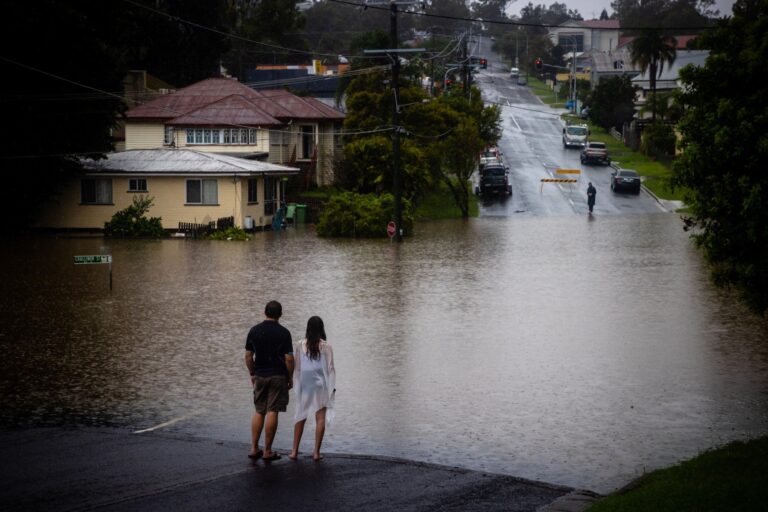
SYDNEY, (Reuters) – Thousands of people have been ordered to leave their homes after heavy rains smashed Australia’s east coast, submerging towns and stranding residents on rooftops, with authorities warning of further life-threatening floods.
The death toll rose to eight on Monday after a man was swept away trying to cross a flooded road, emergency services said.
The Brisbane River in Australia’s third largest city neared its expected peak early in the day with around 15,000 homes there impacted by rising waters.Prime Minister Scott Morrison described the rains as a “weather bomb” that was now moving slowly south to New South Wales, Australia’s most populous state. Morrison told radio station 4BC that defence personnel would be deployed in flood-hit areas.
Southeast Queensland, which has borne the brunt of the severe storm system so far, has been deluged with emergency services rescuing several people from homes. Just over 1,000 schools have been closed and around 50,000 homes are without power.
Several regions in the state have seen rainfall records for February broken after a relentless downpour, with some places getting more than a month’s rains in one day.
“I think everyone would agree, no one has seen this amount of rain in such a short period of time,” Queensland Premier Annastacia Palaszczuk said during a media briefing.
Australia’s east coast summer has been dominated by the La Nina climate pattern, which is typically associated with greater rainfall.
In New South Wales, evacuation orders were issued for several towns, including Lismore, about 700 km (435 miles) north of Sydney.
“I have been fielding calls from very distressed residents who are sitting on rooftops trying to get help. It’s diabolical,” Lismore Mayor Steve Krieg told broadcaster ABC.
Krieg said the sheer speed of rising waters “took a lot of people by surprise” as he urged the town’s near 30,000 residents to leave their homes immediately. “This is by far and away the biggest flood that Lismore has ever seen.”






